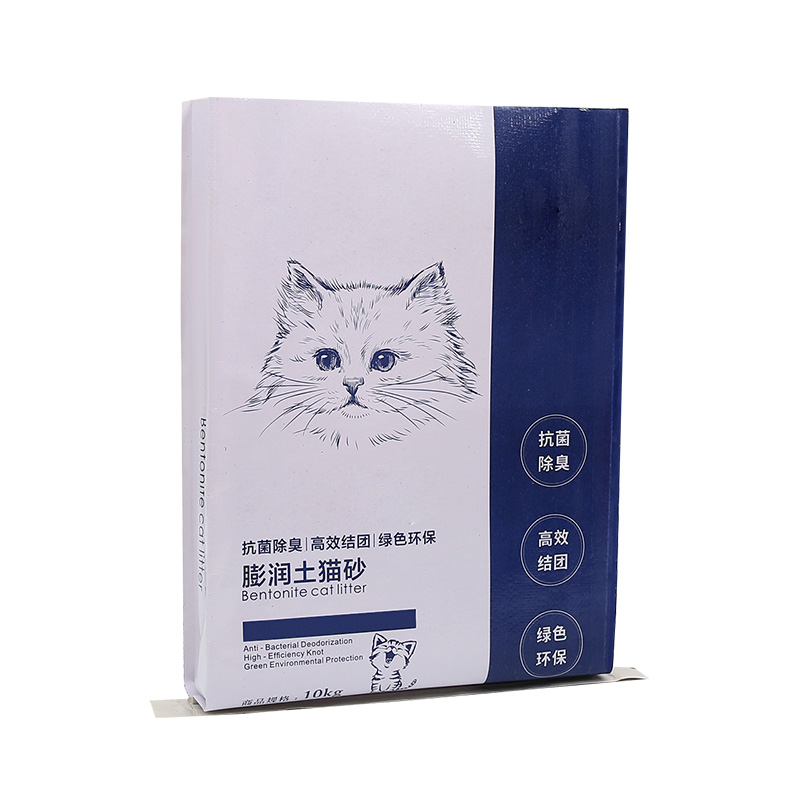Packaging in the building materials sector is a key factor for ensuring safe transport, organized storage, and reliable delivery of products. As projects continue to scale and supply chains become more complex, companies are increasingly focusing on packaging efficiency. Among the packaging solutions widely used in this sector are woven PP sacks, laminated PP bags, and PP valve bags, each offering distinct advantages for specific applications.

Woven PP Sacks are commonly used for bulk materials such as cement, sand, and aggregates. Their structure combines strength and flexibility, allowing them to handle heavy loads without tearing. The woven design also provides resistance to stretching, ensuring that materials remain contained during transport. Woven PP sacks are particularly suitable for industries where mechanical handling is frequent, such as loading onto pallets, conveyor systems, and trucks. Their durability reduces the likelihood of product loss, contributing to both cost efficiency and sustainability.
Laminated PP Bags build upon the strength of woven PP sacks by adding a laminated layer, which offers additional protection against moisture and environmental factors. In the construction industry, where cement and other powders must maintain specific moisture levels, laminated PP bags help preserve product quality during storage and transportation. The laminated layer also allows for improved printing and labeling, making it easier for manufacturers to include branding, handling instructions, and safety information. Laminated PP bags are increasingly adopted for materials that are sensitive to moisture or require longer storage periods, enhancing supply chain reliability.
PP Valve Bags are another widely used solution in the building materials sector. These bags feature a self-closing valve that allows for efficient filling and prevents spillage. PP valve bags are particularly advantageous in automated packaging lines, where the speed and accuracy of filling are important. They reduce labor requirements and waste, contributing to operational efficiency. Additionally, PP valve bags provide consistent weight control and maintain product integrity, which is critical for both manufacturer and end-user satisfaction.
The choice of packaging type often depends on the specific material being handled. For cement and other powdered materials, the combination of woven PP sacks with a laminated coating or a valve bag design can offer a balance between strength, protection, and handling convenience. For sand, gravel, or other heavier aggregates, plain woven PP sacks are usually sufficient due to their structural durability. Manufacturers often evaluate factors such as storage conditions, transportation distance, and environmental exposure before selecting the appropriate bag type.
Efficiency in packaging goes beyond selecting the right bag. Proper stacking, palletizing, and storage practices contribute to less damage and space utilization. Woven PP sacks can be stacked in a way that maximizes warehouse space while maintaining accessibility. Laminated PP bags, due to their enhanced moisture resistance, allow for safer storage in areas exposed to humidity. PP valve bags, designed for automated handling, streamline the packaging process and reduce downtime in production lines. All of these factors together contribute to an overall increase in operational efficiency.
Sustainability is also becoming a critical consideration in packaging decisions. Woven PP sacks and laminated PP bags can be recycled or repurposed, helping to reduce environmental impact. Manufacturers are exploring ways to optimize the reuse of materials, including recycling post-industrial waste and encouraging return programs for used bags. By focusing on efficient material use, the building materials industry can lower waste levels and improve sustainability without compromising product quality.
Packaging efficiency in the building materials industry depends on a combination of appropriate bag selection, handling practices, and sustainability initiatives. Woven PP sacks, laminated PP bags, and PP valve bags each serve unique purposes, supporting the safe transport, storage, and delivery of construction materials. By carefully considering the properties and applications of these packaging solutions, companies can maintain product integrity, improve operational workflow, and contribute to sustainable practices within the industry.


 English
English Español
Español عربى
عربى
